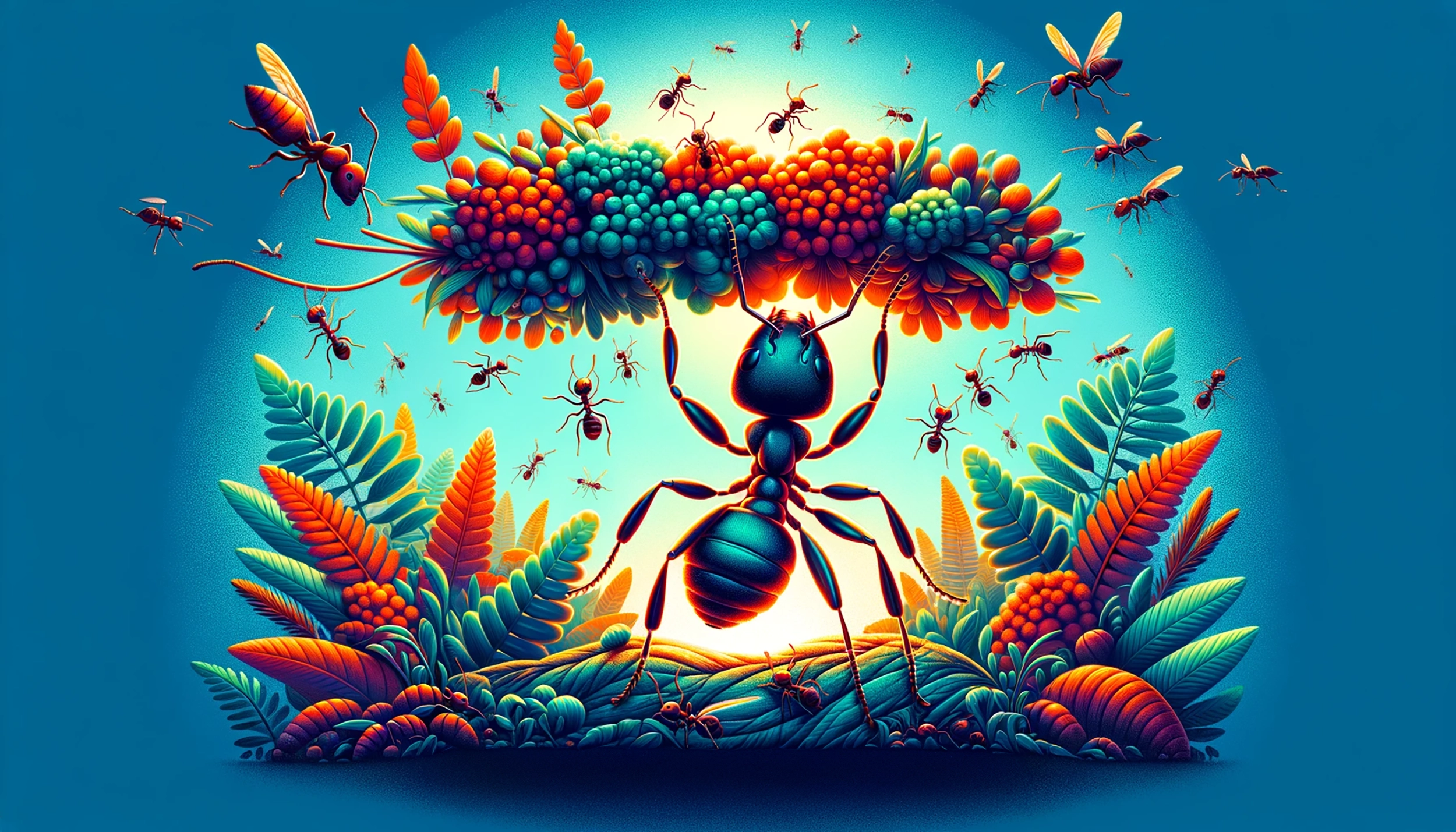
In the vast tapestry of the natural world, where the lion’s roar and the eagle’s flight often capture our awe, it’s easy to overlook the small wonders happening right beneath our feet. Among these, the humble ant holds a fascinating record of strength, resilience, and community that rivals any other species on Earth. Today, let’s delve into the extraordinary ability of ants to lift objects 20 times their own body weight and explore the science behind this incredible feat.
The Marvel of Musculature
At the heart of an ant’s strength is its unique musculature, much different from that of larger animals. Ants are equipped with muscles that are thicker relative to their body size compared to those of larger animals. This density and the mechanical advantage of being small allow ants to produce force and carry weight far exceeding their own. When an ant lifts an object, it maneuvers its body underneath, utilizing its powerful neck muscles to lift the weight overhead, much like a tiny, six-legged weightlifter.
Exoskeleton: The Natural Suit of Armor
Ants possess an exoskeleton, a rigid outer shell that provides structural support and protection. Unlike humans, whose muscles are inside their skeleton, ants’ muscles attach to the inside of their exoskeleton. This setup allows for more efficient force exertion. The exoskeleton is also incredibly lightweight and jointed, offering the flexibility needed to maneuver heavy loads without compromising on protection or strength.
Scaling Laws of Physics
The principles of physics also play a crucial role in an ant’s lifting capability. As per the scaling laws, when an animal’s size decreases, its strength relative to its body weight increases. This phenomenon is due to the fact that the muscle cross-sectional area (which determines strength) scales differently than volume or mass. Therefore, smaller animals like ants can support weights many times their own without the structural integrity of their bodies being compromised.
Evolutionary Advantage
This remarkable lifting ability offers ants a significant evolutionary advantage. It allows them to efficiently gather food, construct their nests, and defend their colonies against predators and rivals. By working collectively, ant colonies can transport large items, dismantle prey, and move objects many times their size, showcasing the incredible power of cooperation and collective effort.
Lessons from Nature’s Lifting Champions
Ants remind us that strength is not solely the province of the big and the bold. In their tiny bodies lies a power and determination that defy the limits of their size. Scientists continue to study ants not just out of curiosity, but to inspire innovations in robotics, material science, and even organizational theory, proving that even the smallest creatures can provide insights with enormous potential.
Ants lifting 20 times their body weight is not just a factoid to marvel at but a testament to nature’s ingenuity. It challenges us to reconsider our perceptions of strength, size, and the potential hidden in the minutiae of life. As we go about our days, let’s take a moment to appreciate the tiny but mighty ants, for they embody the resilience, teamwork, and indomitable spirit that inspire us all.
